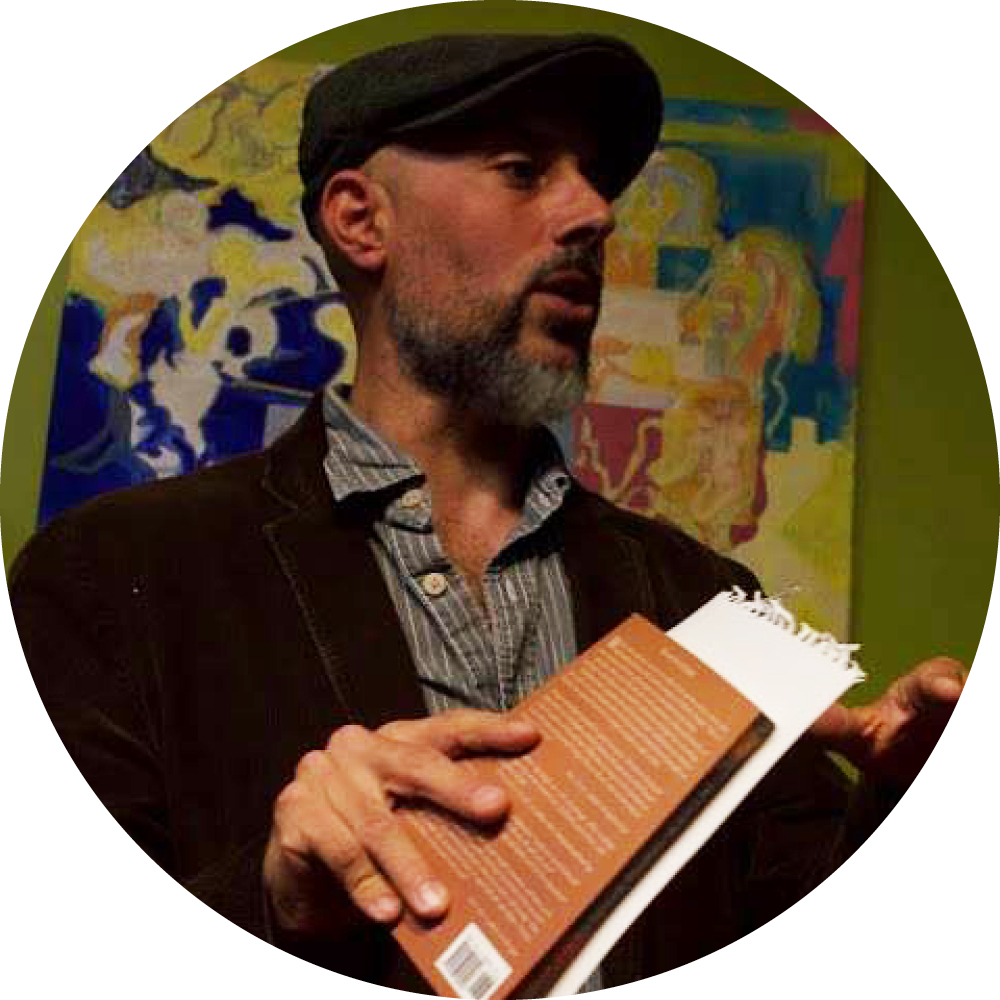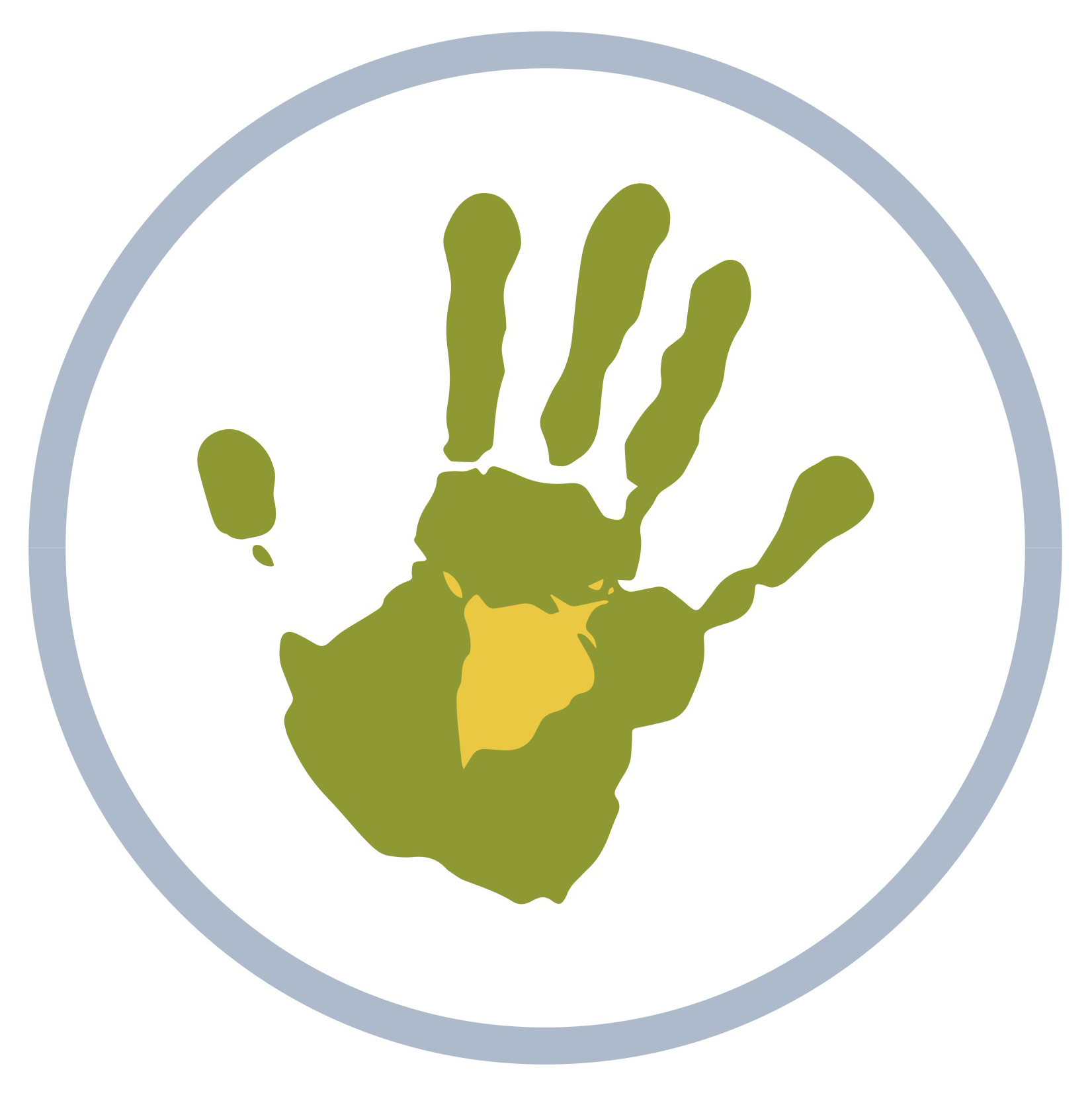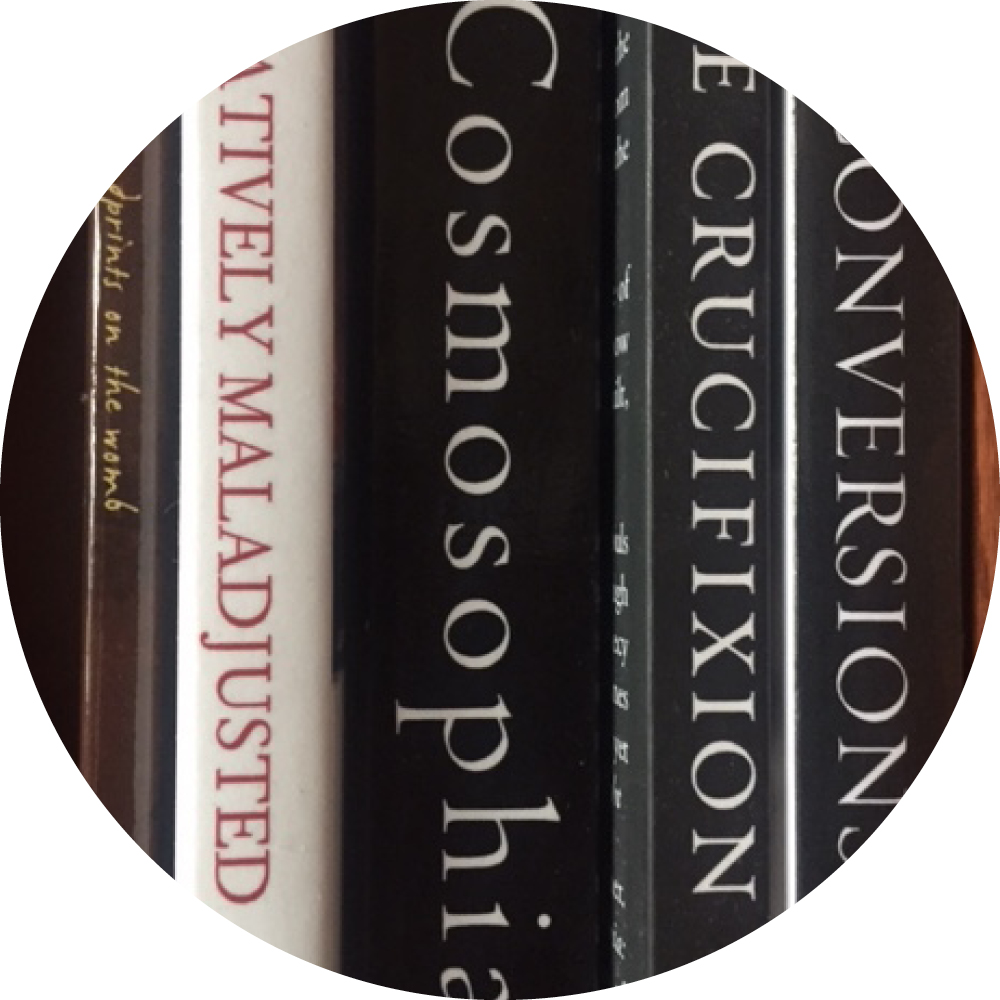Compass Me About With
Songs of Deliverance
By Cleis Abeni (Upāsikā tree turtle)
1
In the summer 1987, I was working as a part-time nursing aide on the overnight shift at the District of Columbia General Hospital. From 1846 to 2001, D.C. General was located in an urban valley within the Southeast, the most economically depressed area in the city. As the capital’s only public hospital, it served no-to-low income patients.
One night, a head nurse summoned me to a ward to bathe and drain the wounds of a dying young man that she said was “difficult.” I was one of the nurses that was often called to attend to patients who had shut down emotionally. Some of my nursing colleagues murmured about the thoroughness of the care that we provided.
“You don’t have to do so much for them,” I remember one colleague always telling me, “and besides, no one cares about what you’re doing.” I answered that our patients knew when they were being devalued. I wish I had also told my colleague that nursing is a professional expression of kindness. But, I struggled to explain my values.
Our terminally ill, emotionally devastated, or economically bereft patients were suffering from “learned helplessness.” I first read about this condition in a book called Helplessness by Martin Seligman that I discovered on a trip to the library while I was living at the last foster care facility within which I was interned.
Learned helplessness is psychosomatic apocalypse. Persistent trauma makes people lose their will to care for themselves. Even when they could, my most compromised patients refused to bathe, eat, or take their medication. Even when given good care, they distrusted it because most of the medical treatment that they received was short shrift.
Many doctors, nurses, aides, and technicians at D.C. General were neglectful and even hostile to their no-to-low income patients. The waits for service were interminable. Even if one of us moved quickly, others’ indolence slowed patient care. The halls were littered with patients on gurneys waiting for rooms. Patients grasped at me in halls.
Black patients were treated the worst. Caregivers disbelieved them when they described true symptoms, gave them less pain medication despite grave injuries, mangled them when drawing blood, and even dragged them from the hospital to the street if they complained about the quality of their care. These atrocities were worse on the nightshift.
The hospital seemed to feed off learned helplessness. Less a medical center, it was like a big foster facility or a homeless shelter. I know because during my childhood I was forced to live in places like this where the world was perpetually ending. Then something happened that summer night at the hospital that changed my life forever.
2
On the young dying man’s chart, I learned that he had AIDS, Hepatitis C, pernicious opportunistic infections, and a surgical wound on his leg. The wound was dressed with a small tube that drains fluid. His sheets were soiled and he had disconnected his IV line. No one was listed on his chart as next-of-kin to contact in case of his death.
He was only a few years older than me, but he was emaciated and looked older. A riot of open sores festered on his body and face. He was a light-skinned black man whose skin had darkened and dried with illness. He shivered with pain. I was tender when I repositioned him to change his bed linen, restore his IV line, and replace his drain.
Suddenly he began to convulse. I thought he was having a seizure. Then our eyes met. We both stopped moving. We recognized each other. He was one of the older teenagers who gang raped me at my last foster care facility. He acted at the direction of a 30-something-year-old male predator at the foster facility.
This adult male predator was the biological son of my foster “mother.” I had not reached puberty when this predator and three older teens almost killed me. The rapes gave me infections, a perineal tear, internal fissures, a sprained arm, contusions on my neck, back and thighs, and outpatient surgery so I could use the bathroom normally again.
I realized why the young man at D.C. General hospital was afraid. Now I held power over him. He may have wanted to die out of learned helplessness, but not at the hands of the late teenaged certified nursing aide who he brutalized several years before in a foster care facility where we were both no doubt fighting for our lives.
I suspect the older teenagers turned to harm because they were themselves being preyed on by the adult male predator. But, nothing would ever make me harm anyone unless it’s self-defense. During the rapes, I bit them, scratched them, and thrashed as hard I could. They grasped my throat so tightly that I still cannot wear neckties today.
What do we do when we face apocalypse? After the young man and I recognized each other in the hospital room, he stopped convulsing and began to weep. He had severe oral thrush and sores around his eyes. Surely even weeping brought him great pain. I stood numb by his bed – quiet, almost not breathing, a ghost.
Then, without feeling or thinking, I simply continued my work. Soon he stopped weeping and fell asleep. His deep sleep allowed me to work quicker so I could complete my rounds on the hall. I was caring for one of my rapists. Yet, somehow, I found a way to perform the same thorough care that I always offered to all the patients.
3
After that night at D.C. General Hospital, I have spent my life trying to understand and hone my commitment to harmlessness – to make it not just instinctual but intentional. Only after I completed my work in his room, did I break down. I hid in a nearby janitor’s room because I did not want anyone to see me cry.
I helped him. But, who helped me? In the janitor’s room, it all rushed back. For as long as I can remember, I have been harmed. My first truly conscious memory as a child of three years old was of being attacked. An elder sibling used to burn me with a scalding iron hair-straightening comb, the kind one heats on the fire of a gas stove.
By the time I was four, I was marked for life with little scars on my face, hand, and torso. The violence did not end with that sibling. My mother beat me, molested me, and pushed me down stairs. Before the age of five, I had a concussion, broken fingers, cuts from whippings on my posterior, and internal tears from my mother’s oil enemas.
I was not the only target. My father beat my mother, chasing her down the alley next to our home, wildly swinging a wooden plank. Almost every month before the age of five, I awoke to his attacks against her. In one attack he beat her out on to the roof and she almost fell off. My mother also beat my siblings for little reason at all.
Of course, when I complained to my mother about my sibling’s burnings, my mother beat me for speaking out. When I complained to my pediatrician, Dr. Margaret Mary Nicholson (I will never forget her name), and my mother found out, she beat me more. Then even worse crimes were committed against me after I turned five years old.
We were a poor black family, and my mother was continually looking for ways to make money. She was a highly literate, self-taught woman who grew up in an orphanage. Our home was violent, but it was also full of books and music. One of her moneymaking schemes involved turning her children into entertainers.
As a pre-teen, my mother was briefly an entertainer on D.C.’s Black Broadway. This was an area along U Street where black owned nightclubs proliferated in the early twentieth century. Remember the sibling who burned me? He was a magician in his late teens and early twenties. My mother, middle sibling, and I assisted in his magic act.
My mother broke me into the entertainment business at four-and-a-half, handing me off to a locally famous actor and manager in hopes that his bookings for my tap dance, tumbling, singing, and bit acting parts would earn income. This manager turned out to be a predator and a child pornographer. He preyed on me from the ages of five to seven.
4
I taught myself how to read at the age of three-and-a-half using the King James Bible and my mother’s novels. These texts’ tales of struggle moved me. But, their forms moved me more. I memorized passages to understand how they were composed. When I was abused, I recited Psalms inside my mind. To survive, I became a formalist.
Psalm 32:7 was my favorite: “Thou art my hiding place; thou shalt preserve me from trouble; thou shalt compass me about with songs of deliverance.” Form is spiritual work. Spiritual work connects us to forces that supersede our egos. The reassuring repetitions of the Psalms kept me calm. I was speaking to God.
Even this lyric essay has a carefully composed form. There are eight sections with eight paragraphs in each section. Each paragraph has the same relative length. Sentences are pared down to their essential parts with few adverbs and adjectives. I try not editorialize. Instead of telling readers what to feel, I want descriptions to show meaning.
This essay’s form is an antidote to the way trauma is often narrated in American culture. Movies, television, and the Internet sentimentalize and sensationalize trauma. They reinforce apocalypse by exploiting violence. In contrast, this restorative narrative hopefully moves with a similar intention and impact as my childhood recitations of the Psalms.
Before the rapes, regardless of the violence, my repetitive prayerful recitations helped me breathe intentionally and remain calm. But, by the time I was placed in the last foster facility, I lost the will to speak with God. I came to believe that no one would ever help me when I was attacked. I stopped reciting the Psalms inside my head.
The first person to observe how I survived was a man named Guy C. McElroy, or “Mr. Guy” as I called him. He was the curator of the Bethune Museum. Through D.C.’s Youth Employment Program, I worked as his teenage part-time assistant. I researched the provenance of art for exhibits and wrote copy for promotional displays.
At work, while discussing Biblical influences in art, Mr. Guy was surprised to learn that I knew passages from the Bible by heart. I opened up to him and disclosed the violence perpetrated against me, and the ongoing medical complications that I still endured. Mr. Guy arranged and paid for outpatient surgery to repair me internally.
A day after I treated one of my rapists at D.C. General Hospital, I went to Mr. Guy’s home. I was in the throes of a breakdown. I told him what happened when I recognized my rapist at the hospital. He took me in and let me stay with him. The things he told me on the night I came to his home sparked the greatest awakening of my life.
5
“Why are you helping me?” I asked Mr. Guy that night. He had welcomed me into his home like he had done on numerous occasions. Would Mr. Guy’s kindness turn into malevolence? Was he hiding an ulterior motive? I had told him more about my struggles than anyone. Almost everyone in my life broke me. Would he break me too?
Mr. Guy calmly explained that his help had no conditions. He understood why I was distrustful. Mr. Guy was a researcher by trade – an art historian. My disclosures had spurred him to research child abuse so he could understand my experience. Since infancy, I had survived complex forms of violence, he explained.
I was rare in one respect, he said. Unlike the majority of American children that begin to be abused between infancy and toddlerhood, I had survived. Most die from their injuries. He was correct. The American Society for the Positive Care of Children reports that 75 percent of child abuse fatalities are under the age of three.
Distrust was my survival mechanism. Moreover, he had discovered that my experiences were not as rare as he’d imagined. I don’t remember the statistic he cited. But, over 30 years since, things have not improved. In 2015, the U.S. Department of Health and Human Services reported that five children die every day from abuse.
“Somehow,” Mr. Guy told me, “you survived, but I want you to do more than survive. I want you to thrive.” Then he told me that the high rate of crimes against children made my struggle more than personal. It was societal. If the world was perpetually ending for me, then it was apocalyptic for everyone even if many did not understand.
I remember becoming momentarily confused. How could my story be more than personal? He explained that every time any living thing is harmed, all life is indicted. Having to care for one of my rapists as a nurse at the poor people’s hospital exemplified the systemic problem of abuse – the way larger societal systems enable violence.
I was amazed by his explanations and I urged him to unpack his reasoning further. He offered that, at every turn within my story, the violence that I endured was tied not just to individual people’s crimes, but to patterns of oppression arraigned around me. My mother’s poverty influenced her depravity as much as her mental illness.
He told me that the very fact that I stayed in that room and cared for that young man indicated that I broke a pattern of violence that our societies too often espouse. That pattern creates cycles of vengeance. I chose healing. Did I know that I could deepen my healing practice for others, Mr. Guy asked, and help myself too?
6
At the time, Mr. Guy was working on his magnum opus, a landmark book called Facing History: The Black Image in American Art, 1710-1940. As his assistant, I fact checked the provenance of art featured in the book. He called this research, “the practice of making the unknown knowable and the invisible visible.”
“When I started the project, I was accused of being an activist historian,” Mr. Guy would often tell me. Exposing pre-20th century white artists’ debt to black culture was seen by some of his colleagues as merely a personal mission because he was himself black. But, Mr. Guy stressed, “the personal is always political for oppressed people.”
Mr. Guy suggested that, even though my rapist committed a grave crime against me, he and I were both oppressed youth living in systems of dispossession. We were “interdependent.” That was the first time I heard of the word. He clarified that he was talking about the Buddhist notion of interdependence.
At the time, I only knew about Buddah Records—the company that released music by artists like Bill Withers and Curtis Mayfield. I knew nothing about Buddhism—the ancient wisdom of Siddhartha Gautama (the Buddha) — a man named who lived in India between the sixth and fourth centuries BCE—and his followers.
Mr. Guy was an ecumenical man who was always seeking peace. He practiced several religions. Buddhism and Quakerism were his fondest faiths because of their commitments to nonviolence, kindness, and an ending to human suffering. The Buddhist notion of interdependence, he told me, was called paticcasamuppada.
In the ancient Buddhist language of Pali, paticcasamuppada roughly translates to “dependent origination.” For Mr. Guy, paticcasamuppada meant that we must depend on each other for our flourishing. Mr. Guy suggested that it does not change my rapist’s need for accountability to understand that he too was oppressed.
We were both abused children preyed on by the same adult. But, I countered, I was different. He chose to rape other children in league with an adult arch predator. I did not harm others because I was being harmed. I should not have to forgive any of my rapists. But, Mr. Guy was not talking about forgiveness.
The opposite of revenge is not always forgiveness, he reasoned. Sometimes, the opposite is mercy and healing. I know now that he was trying to explain the difference between restorative justice and retributive justice. He wanted me to turn my act of mercy and healing into a larger practice. But how? Frustrated, my breathing became labored.
7
To calm me down, Mr. Guy asked me to consider a key moment that he remembered from my description of the incident at the hospital. While my rapist wept, I stood numb by his bed – quiet, almost not breathing, a ghost. “It was understandable that you lost your breath,” he told me, but, I must never do that again.
I must find new ways to breathe, Mr. Guy said, and these new breathing techniques will form the cornerstone of the justice that I find within myself. They will allow me to cope with my symptoms of post-traumatic stress, he suggested. I will forge ongoing healing even when my perpetrators are not held to account for their crimes.
“Your breath is your voice,” Mr. Guy reasoned. Ultimately, finding a practice of new breathing will help me articulate to others how to cope with harm. We stayed up for the rest of the night and he taught me an ancient form of Buddhist meditative breathing called anapanasati, or in-out breathing.
His lessons began with distinguishing between passive breathing – the ongoing, largely unrecognized inhalations and exhalations that typify our most vital life signs – and active breathing—the intentional patterning of inhalations and exhalations to stimulate enlightened effects within our bodies and minds.
Mr. Guy then taught me about the art of inhaling and exhaling through my nose at regular rates. To do this, he showed me how to count up when inhaling (1-2-3) and count down when exhaling (3-2-1). Then he taught me how to inhale for 3 counts followed by a long exhalation in 5 counts (5-4-3-2-1).
This long exhalation palatably increased my sense of calm and focus. “Note how tender and light the breath is in the mustache area between your nostrils and upper lip,” I remember him saying to me. Imagine, he said in his artful way, that your inhalations and exhalations are making an invisible caterpillar wiggle above my top lip under my nostrils.
Mr. Guy’s lessons that night not only initiated my long exploration of Buddhist mindfulness – including my lay ordination as a Theravadin upasika in Thailand under the tutelage of an American-friendly nun and temple founder named Chandra Khonnokyoong. His lessons also began my exploration of mindfulness to treat trauma.
Survivors are often told to “get over it,” “let it go,” or “keep it in the past.” But, trauma lives on, impacting us daily. We may not be able to forget, but we can cope. We can move beyond apocalyptic thinking to embrace deliverance, however tough it sometimes is. My deliverance began with learning how to breathe again.
8
In 2014, I was asked by a group of advocates to travel to one of the largest homeless shelters in D.C.– a “megashelter,” as they called it – to lead a mindfulness workshop for trauma-impacted children. It turned out that this homeless shelter was, in fact, D.C. General Hospital. After the hospital closed, the city turned the site into a shelter.
In a sense, D.C. General Hospital was always a homeless shelter. But, now the conditions at the site had become dire and no one pretended that healing was part of the institution’s mission. On January 22, 2018, WAMU Radio reported that 296 adults and 415 children still lived in squalid, dangerous conditions at the megashelter.
The advocates arranged the intervention at the shelter in the wake of a horrific incident. In 2014, an 8-year-old African American girl named Relisha Rudd was abducted at the megashelter. While her remains were never found, law enforcement suspected that a janitor at the shelter raped and killed Relisha before later killing himself and his wife.
All was not well with the intervention that the advocates were arranging. The lead organizer had a hard time liaising with the shelter’s staff. Dates for the workshop changed several times. I had no control over the way in which the advocacy team arranged the workshop. Briefly, the team stopped answering my messages.
When one of the team members finally responded to my calls, the person explained that the project’s point person staff had left their job at the shelter, but we had a firm date for the workshop. I asked if there was anything that I could do to improve the arrangements. The person replied “No,” and told me to be at the shelter at the arranged date.
Over the last thirty years I have found that many groups that work on behalf of the marginalized have their own deep-set managerial and organizational problems. These problems escalate the hurt of the people that we serve. Regardless of the obstacles, I decided to remain calm and show up ready-to-go on the appointed date.
The journey from Baltimore by several trains and buses to the shelter was arduous. When I finally arrived, I found that I was nearly hyperventilating. The imposing dilapidated structure brought back my awful memories of nursing there. Then my teammates were late. The shelter’s staff did not seem to know where the workshop would occur.
Anxiety engulfed me. My teammates were livid. Then the affair was simply canceled. I remained pleasant to all, but once outside of the building, it took all of my will to get my breathing under control again. I sat against a wall, counting up on the inhalation and down on the exhalation, restoring myself before the long journey home.
About The Author
Cleis Abeni (Upāsikā tree turtle)
A former certified practical nurse and a longtime holistic educator and mindfulness teacher, Cleis Abeni is a Buddhist upasika in daily meditative practice for 31 years. A veteran writer, editor, and communications specialist, Cleis has worked for over 25 years for the betterment of marginalized youth and adults. Cleis offers the following insight: “When we move our focus from competition to contribution, life becomes a celebration. Never try to defeat people. Just win their hearts.” To learn more about Cleis, visit CleisAbeni.com
Re-sources
Re-Imagining Education

Empowering educators to take a deeper look at the stories told in our schools and to re-imagine them in transformative and
nurturing learning spaces.
Learning Opportunities

Classes, workshops, and lectures that help to empower people to re-imagine who they are and their place in the world.
Get Involved

Help the Chicago Wisdom Project realize its mission to re-imagine education through holistic programming that transforms individual, community and world through creative expression.
